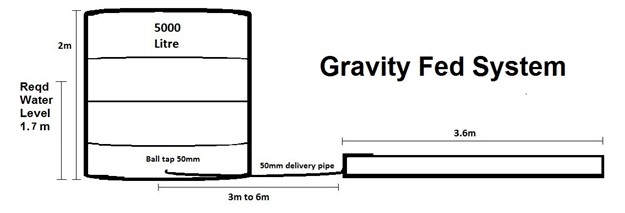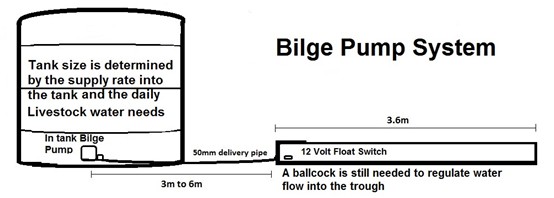Temporary water points are an option to fixed troughs as a means of improving summer grazing. Relocating troughs to different locations in a paddock will provide many benefits including;
There are a number ways to set up temporary water points for livestock.
Using a holding tank at the livestock trough will supply livestock with cool water, when using an above ground pipe during the summer/autumn period to a temporary trough.
Key principles to keep in mind for water point design for three hundred sheep are;
If relying on water height to achieve adequate water flows from the holding tank into the water trough, a water height of around two metres above the trough will be required.
A 12 volt bilge pump will reduce the vertical height and quantity of water needed in the tank to supply an adequate supply of cool water to the livestock trough throughout the day. A 12 volt float switch is used to turn on the bilge pump when the water trough is low. A 2,000 to 3,700 gallon per hour bilge pump will provide a flow rate over one litre of water per second when used with a 32 mm trough ball cock. The ball cock can be set to open at a higher water level, than the electric float switch. This will allow the water trough to be filled by gravity until the trough is close to empty. A deep cycle 12 Volt 40 amp battery and a 40 Watt solar panel are used to power the pump.
Keep in mind if you are thinking of leaving the tank on a trailer, you will need a sturdy trailer and less than 2,000 litres in the tank to shift it safely with most 4WD utes. Using a 12 volt bilge pump will provide an adequate flow of water to the livestock with an almost empty tank, making it easier and safer to shift the tank. Relocatable tanks can also be repositioned during cropping and used to supply water for general farm use, such as cleaning equipment and spraying.
For more information contact Michael Richards, 0427 547 052, michael.nynrm@internode.on.net

